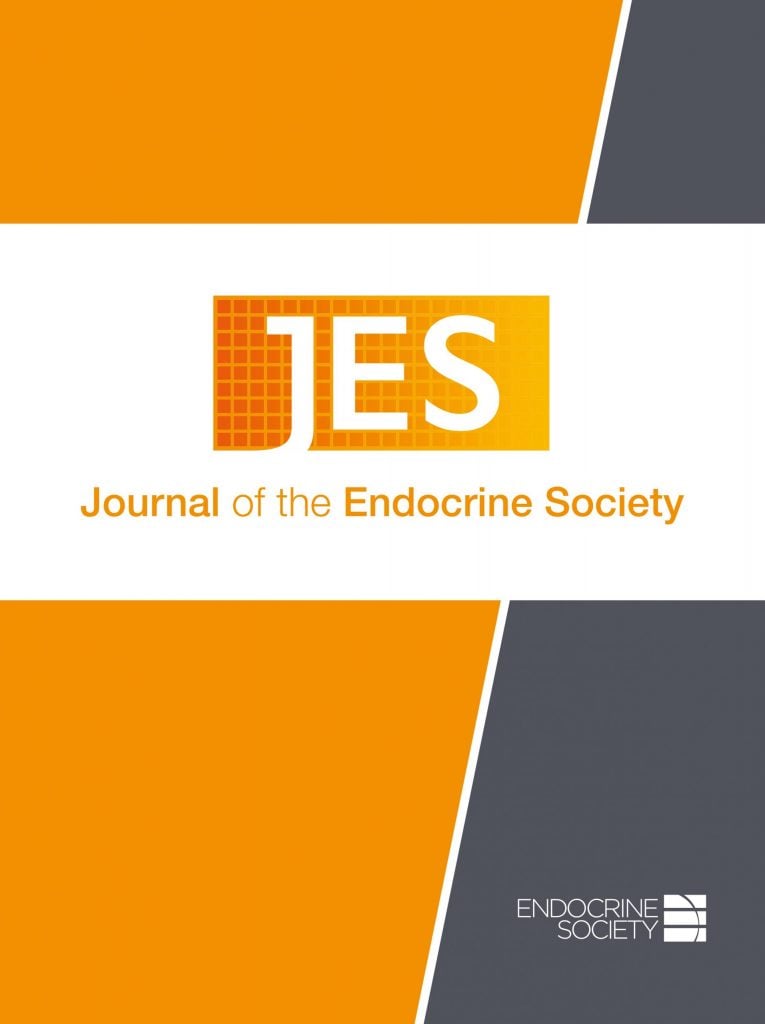
For patients with large, symptomatic thyroid goiters and toxic nodules, the question of whether to undergo surgery may soon have a less invasive answer. A new procedure, pressure-enabled thyroid embolization (PED-TAE), is emerging as a promising alternative. An initial clinical study published in the Journal of the Endocrine Society titled, “Safety and Efficacy of Pressure-Enabled Thyroid Embolization: A Novel Approach for Symptomatic Thyroid Disease,” has shown PED-TAE to be a viable option for treating symptomatic thyroid disease.
Thyroid artery embolization (TAE) is a minimally invasive technique performed by interventional radiologists to reduce the blood supply to the thyroid gland. By injecting embolic agents, such as microspheres, into the arteries feeding the thyroid, the procedure causes the targeted tissue to shrink, alleviating pressure symptoms like difficulty breathing and swallowing. Traditionally, TAE involves accessing both the inferior and superior thyroid arteries — routes that carry technical challenges and increased procedural risks, including the possibility of non-target embolization and even strokes.
The latest advancement uses a pressure-enabled drug delivery device (PEDD) to create a forward pressure gradient, allowing the microspheres to be delivered evenly through the inferior thyroid artery alone. This change bypasses the risky superior artery, potentially lowering the risk of complications and improving the safety profile of the procedure.
Embolization was initially used for tumors and uterine fibroids, and its application to thyroid disease is relatively new—the first TAE for Graves’ Disease was performed in 1994. Despite its growing use, there are currently no long-term studies directly comparing TAE to thyroidectomy. Thyroidectomy, while effective, carries its own risks, such as recurrent laryngeal nerve damage and the need for lifelong hormone replacement due to permanent hypothyroidism.
The latest advancement uses a pressure-enabled drug delivery device (PEDD) to create a forward pressure gradient, allowing the microspheres to be delivered evenly through the inferior thyroid artery alone.
In the recent retrospective cohort study, 22 patients with symptomatic thyroid conditions underwent PED-TAE. Among these, half had multinodular goiters, six had toxic nodules or goiters, three chose the procedure before thyroidectomy, one had Graves’ disease, and one had a solitary nodule. Importantly, none experienced neurovascular complications. Mild pain or discomfort was reported by 18 patients, but these symptoms resolved within two weeks.
Of those with hyperthyroidism, 71% achieved normal thyroid function following treatment. For the 18 patients who completed six months of follow-up, the average thyroid gland volume decreased dramatically — from 184.5 mL to 49.9 mL, a significant 73% reduction. This compares favorably to the 56% average reduction observed with traditional TAE, which involves embolizing both major thyroid arteries.
Researchers conclude that PED-TAE is a safe, feasible, and effective alternative to thyroidectomy for selected patients, offering substantial volume reduction and rapid symptom relief. To build on these promising early results, a multi-institutional registry study is being planned to further evaluate the procedure’s long-term outcomes and broader applicability.
“Thyroid diseases pose a considerable threat if left untreated for an extended period and are linked to higher cardiovascular disease risk, compromise of cerebral blood flow, and osteoporosis,” the authors write, encouraging “prompt treatment” whether it is major surgery such as thyroidectomy or a minor one such as PED-TAE. — Jackie Oberst

